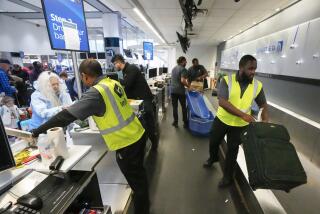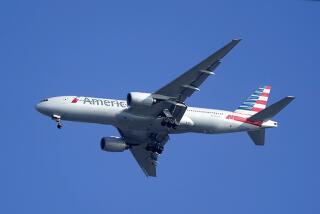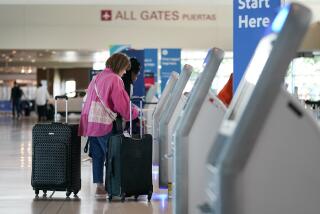FAA to increase U.S. pilot training in wake of Asiana crash
WASHINGTON -- Under political pressure to act in the wake of the San Francisco jet crash, federal authorities announced Wednesday they will enact new aviation safety rules, including a requirement for increased training of U.S. pilots.
While the new rules would apply only to pilots on U.S. passenger and cargo airlines, a group of lawmakers sought to use Saturday’s crash-landing of a South Korean jetliner to call attention to aviation safety and put pressure on the FAA to complete work on rules that grew out of a 2009 plane crash near Buffalo, N.Y.
“Flying in America has never been safer, but the tragic crash of Asiana Flight 214 is an urgent reminder that we must still constantly look for ways to make it even safer,” Rep. Rick Larsen of Washington state, top Democrat on the House aviation subcommittee, said in praising the FAA announcement.
The new rule, which becomes effective by early next week, would require first officers who fly U.S. passenger and cargo planes to have 1,500 hours of flight time — the same as captains — rather than 250 hours.
First officers would be required to undergo additional training specific to the airplanes they fly. A pilot also will need a minimum of 1,000 flight hours as a co-pilot in air carrier operations prior to serving as a captain for a U.S. airline.
New training requirements also are expected to be issued this fall to “ensure pilots know how to react properly in difficult operating environments,’’ according to the FAA announcement.
“The rule gives first officers a stronger foundation of aeronautical knowledge and experience before they fly for an air carrier,” FAA Administrator Michael Huerta said.
The announcement came just hours before a group of New York lawmakers planned a news conference to press the FAA to complete work on the new rules. The FAA earlier this year drew criticism from its inspector general for being 18 months behind schedule for completing work on an “important safety initiative that will require pilot training programs to incorporate flight simulators and enhance pilots’ abilities to work together during emergencies, as well as how to recognize and recover from stalls.’’
Congress in 2010 passed legislation requiring increased training and experience for pilots after lobbying by the families of the victims of the 2009 Colgan Air crash, which killed 50 people near Buffalo. Pilot training and fatigue were cited as factors in the crash.
The FAA in December 2011 announced new rules designed to reduce fatigue, including requiring pilots to have at least a 10-hour rest period before flights.
While the cause of the crash at San Francisco International Airport is under investigation, attention has focused on the pilots, who were flying too low and slow during their final approach. It also was the pilot’s first landing in San Francisco in a Boeing 777. Two people were killed and 182 were injured in the crash-landing.
ALSO:
Texas House provisionally approves abortion bill
2 South Carolina families among dead in Alaska plane crash
Thousands honor hotshot firefighters ‘gone at the turn of the wind’
Richard.simon@latimes.com
More to Read
Sign up for Essential California
The most important California stories and recommendations in your inbox every morning.
You may occasionally receive promotional content from the Los Angeles Times.










